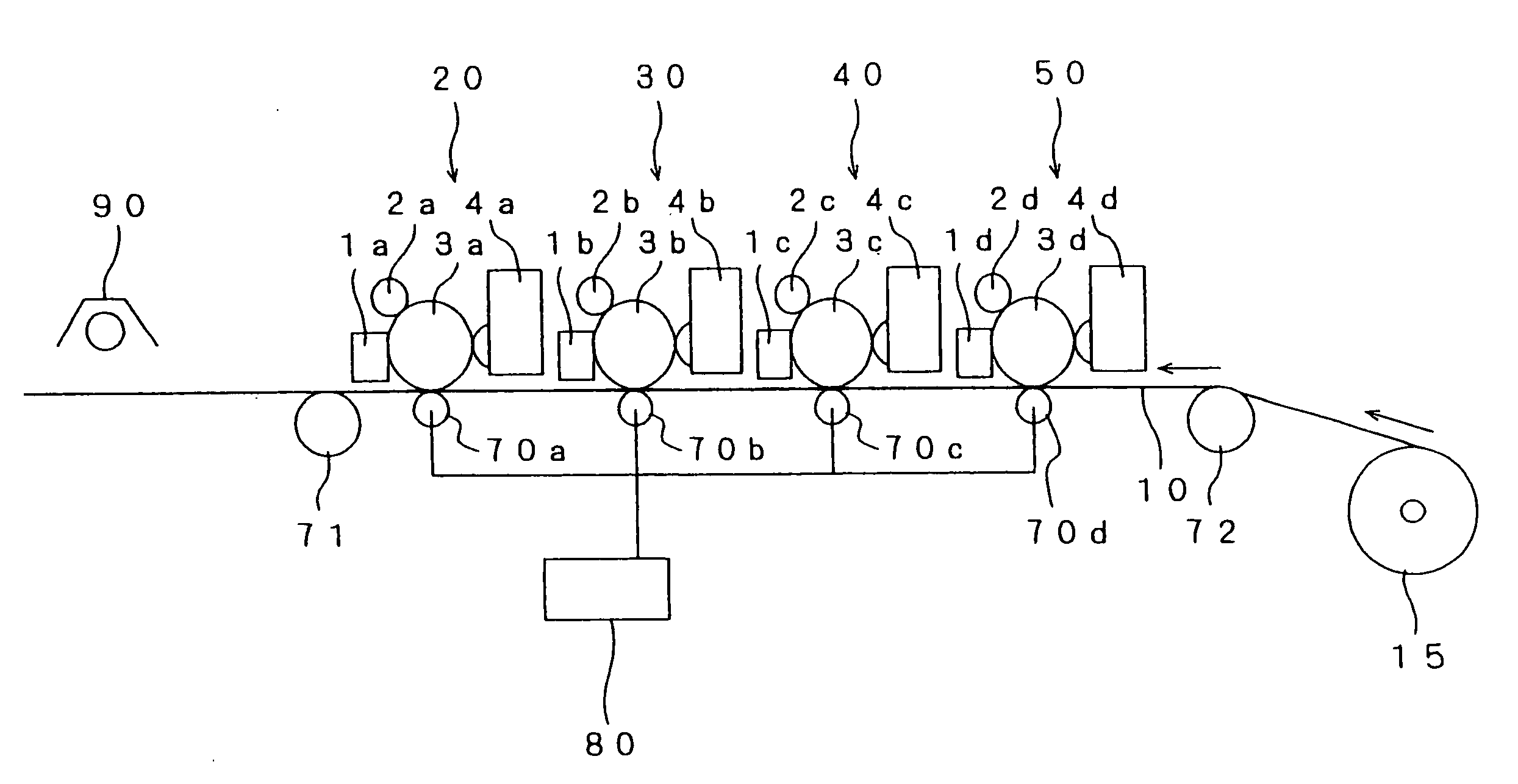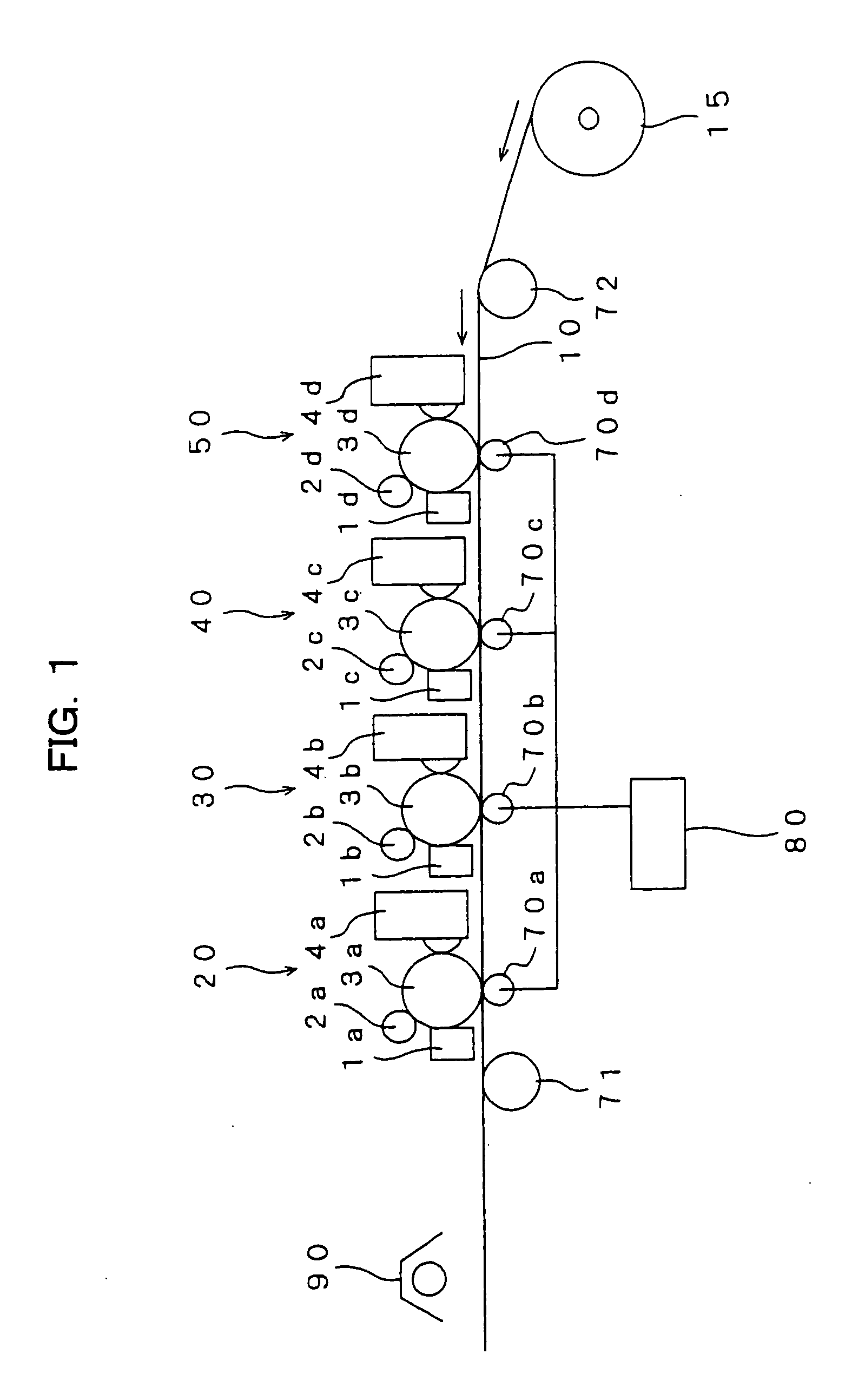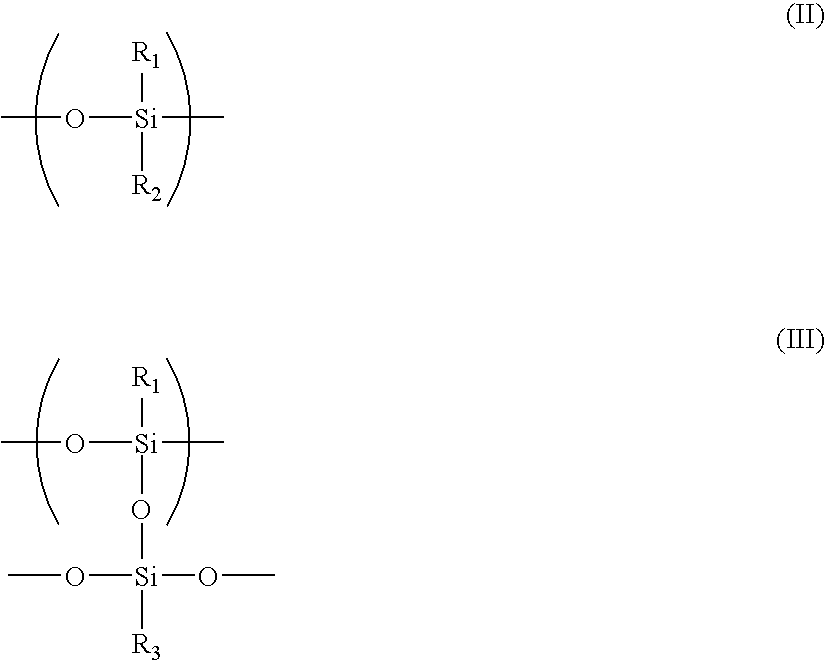Electrostatic latent image developer and image-forming apparatus
- Summary
- Abstract
- Description
- Claims
- Application Information
AI Technical Summary
Benefits of technology
Problems solved by technology
Method used
Image
Examples
examples
[0151] The invention will be described in detail with reference to examples. In the following descriptions, “part(s)” and “%” respectively denote “part(s) by mass” and “% by mass”, unless otherwise specified.
Carrier 1
[0152] An amount of a cross-linkable silicone resin (manufactured by Shin-Etsu Chemical Co., Ltd.) having trifluoropropyl groups in a content of 15%, which amount corresponds to 200 parts of the solid matter of the silicone resin, is taken. The silicone resin is dissolved in 1000 cc of toluene serving as a solvent. Electrically conductive carbon black (KETCHEN BLACK EC600JD manufactured by Lion Co., and having a BET specific surface area of 1270 m2 / g) is added to the resultant solution so that the mass ratio of the carbon black to the solid matter of the solution is 15%. Two parts of an organic curing catalyst, aluminum di-n-butoxide monoethylacetoacetate, is added to the resultant mixture, and the resultant blend is stirred with a pearl mill to obtain a coating liqu...
example 21
[0202] A tandem printer shown in FIG. 1, and having four developing units in a row, an ability of outputting 400 A4-size sheets of paper for one minute and a linear velocity of 2000 mm / sec is provided by remodeling printers, DOCUPRINT 1100CF manufactured by Fuji Xerox Co., Ltd. The developers including the carrier 1 and the respective yellow, magenta, cyan and black toners are put in the four developing units, respectively. The yellow toner used is YT-3. An image is continuously printed on one million sheets of paper and the characteristics of the printed images are evaluated in the above-described manner.
[0203] The results show that, even when an image is printed on one million sheets of paper, printed images whose lightness, toner amount and fixing rate hardly change can be obtained.
example 22
[0204] The developer including the invisible toner (ST-1) serving as a toner for cipher printing and the carrier 1 is put in a printer obtained by remodeling a printer, DOCUPRINT 1100CF manufactured by Fuji Xerox Co., Ltd., and having an ability of outputting 400 A4-size sheets of paper for one minute. An image (bar code image) is continuously printed on one million sheets of paper with the printer. The quality of the last printed image is almost the same as that of the first printed image.
[0205] Readability of the bar code image printed on the 1,000,000th sheet of paper is judged. The bar cord reader used in the judgment is obtained by remodeling a bar code printer, THLS-6000 & TBR-6000 manufactured by Token Co., and having, as a light source, a laser which emits light having a wavelength of 780 nm, and a detector. In the remodeling, the light source is replaced with an IR light emission diode (GL480Q manufactured by Sharp Co., and having a peak emission wavelength of 950 nm) and ...
PUM
 Login to View More
Login to View More Abstract
Description
Claims
Application Information
 Login to View More
Login to View More - R&D
- Intellectual Property
- Life Sciences
- Materials
- Tech Scout
- Unparalleled Data Quality
- Higher Quality Content
- 60% Fewer Hallucinations
Browse by: Latest US Patents, China's latest patents, Technical Efficacy Thesaurus, Application Domain, Technology Topic, Popular Technical Reports.
© 2025 PatSnap. All rights reserved.Legal|Privacy policy|Modern Slavery Act Transparency Statement|Sitemap|About US| Contact US: help@patsnap.com



